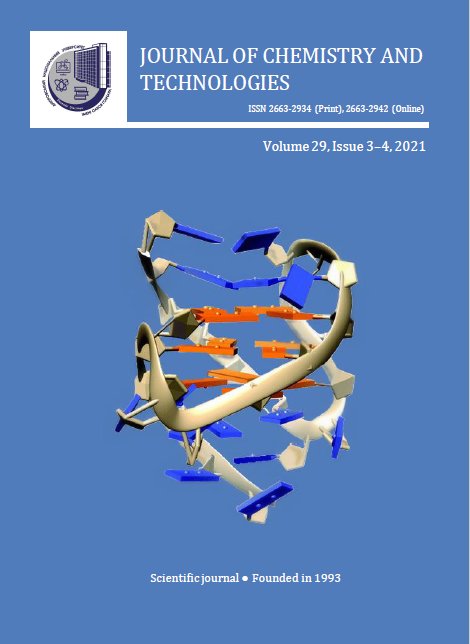RESEARCH OF COKE WASTEWATER TREATMENT PROCESS WITH GLAUCONITE CLAY
DOI:
https://doi.org/10.15421/jchemtech.v29i4.238046Keywords:
coke wastewater, differential thermogram, phenols, rhodanides, ammonia, resinous substances, glauconite, adsorption isothermAbstract
The process of complex purification of coke wastewater from phenols, rhodanides, ammonia, and resinous substances with the use of glauconite clay has been studied. Natural and activated glauconite, glauconite in combination with cationic flocculant brand Extraflock P 70, and activated carbon brand UAF (for comparison of cleaning efficiency) were used in this research. The activation of natural glauconite was carried out with a 7 % solution of HNO3 at 95–100 °C, at a ratio "mineral sorbent:acid solution" of 1:6 and an activation time of 5 hours It has been established that acid activation leads to a change in the chemical composition of glauconite and increases the specific surface area from 32 m2/g to 128 m2/g. Based on the results of natural glauconite thermal analysis, a conclusion was made about the phase transformations and chemical reactions that occur in glauconite clay during heating or cooling. Also, the thermal effects that accompany these changes, and some qualitative characteristics of the glauconite mineral were found. It was established that the maximum degree of phenols extraction from industrial effluent is up to 50% and is achieved when glauconite is used in combination with a flocculant. The maximum degree of purification from total ammonia is 57–58 % when using activated glauconite and glauconite with flocculant. The lowest degree of purification is achieved for rhodanides removal, not exceeding 20 % for any adsorbent. The highest degree of purification of 96.8 % is observed when removing resinous substances with glauconite in combination with a flocculant. Activation of glauconite by HNO3 leads to an increase in sorption capacity by 5–15 % depending on the pollutant. The coke wastewater purification degree of these pollutants with activated carbon is 20 % of phenols, 14 % of rhodanides, 28 % of total ammonia, and 72 % of resinous substances, respectively. Therefore, in industrial practice, it is recommended to use glauconite at a concentration of 2 g/dm3 in combination with 0.1 % solution of cationic flocculant with a volume of 30 cm3/dm3 with the duration of wastewater treatment 20–180 minutes for complex processing of effluents.
Downloads
Published
Issue
Section
License
Copyright (c) 2022 Днипровский национальный университет имени Олеся Гончара

This work is licensed under a Creative Commons Attribution 4.0 International License.
- Authors reserve the right of attribution for the submitted manuscript, while transferring to the Journal the right to publish the article under the Creative Commons Attribution License. This license allows free distribution of the published work under the condition of proper attribution of the original authors and the initial publication source (i.e. the Journal)
- Authors have the right to enter into separate agreements for additional non-exclusive distribution of the work in the form it was published in the Journal (such as publishing the article on the institutional website or as a part of a monograph), provided the original publication in this Journal is properly referenced
- The Journal allows and encourages online publication of the manuscripts (such as on personal web pages), even when such a manuscript is still under editorial consideration, since it allows for a productive scientific discussion and better citation dynamics (see The Effect of Open Access).


